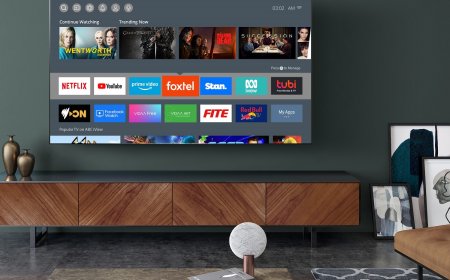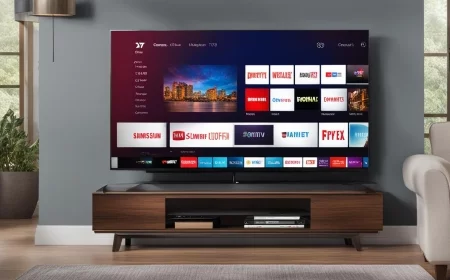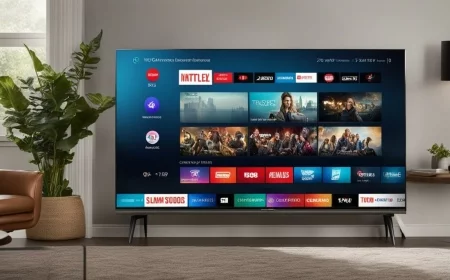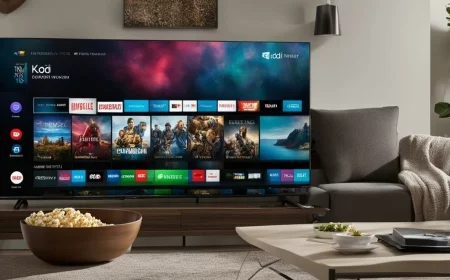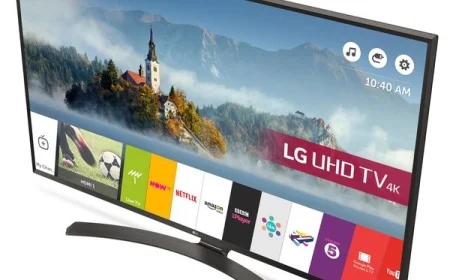The Rise of IPTV Services in the United States

The Rise of IPTV Services in the United States has been nothing short of revolutionary, fundamentally altering how Americans consume television content. This transformation is driven by technological advancements, shifting consumer preferences, and dynamic market forces. Let's explore the key facets of this rise, supported by data and trends from the search results.
📈 1. Market Growth and Economic Impact
· Explosive Market Expansion: The global IPTV market was valued at **$187.01 billion in 2025**, up from $160.44 billion in 2024, reflecting a 16.6% CAGR . The U.S. market alone reached $32.6 billion in 2024** and is projected to hit **$106.7 billion by 2033, growing at a 12.4% CAGR .
· Subscriber Growth: IPTV has over 250 million global subscribers in 2025, with the Asia-Pacific region leading in volume (105 million users). The U.S. is a revenue leader, accounting for 42.5% of North America's share .
· Cord-Cutting Acceleration: Over 40 million Americans have switched to IPTV services, driven by cost savings. IPTV subscriptions average $8–$12/month, compared to traditional cable's $80–$150/month .
🚀 2. Key Drivers of Adoption
· High-Speed Internet Proliferation: The expansion of 5G networks and fiber-to-the-home (FTTH) infrastructure enables seamless 4K/UHD streaming. For example, Airtel's Xstream Fiber launch in remote areas highlights this trend .
· Consumer Demand for Flexibility: Viewers prefer on-demand content and multi-device accessibility. Services like Hulu + Live TV combine live channels with vast VOD libraries, catering to binge-watching habits .
· Cost-Effectiveness: IPTV offers significant savings, with budgets as low as $28/month (Philo) versus cable. Customizable plans (e.g., Sling TV's Orange/Blue packages) allow users to pay only for desired content .
· Sports and Live Events: Platforms like fuboTV focus on sports, offering 400+ channels, 72-hour Lookback, and Startover features. This has attracted millions of sports enthusiasts .
📺 3. Leading IPTV Services in the U.S.
The U.S. market is dominated by both verified legal services and unverified providers. Here’s a comparison of top legal services :
Service Starting Price Key Features Best For
YouTube TV $82.99/month 100+ channels, unlimited DVR, Multi-View Comprehensive packages
Sling TV $45.99/month Customizable plans, budget-friendly Cost-conscious viewers
Hulu + Live TV $82.99/month Bundles Disney+ and ESPN+, large VOD library Live + on-demand combo
fuboTV $54.99/month 400+ channels, sports-focused features Sports enthusiasts
Philo $28/month 70+ entertainment channels Budget entertainment
Unverified services (e.g., Apollo Group TV, CatchON TV) offer 20,000+ channels at $10–$20/month but operate in legal gray areas and require VPNs for privacy .
🔮 4. Emerging Trends Shaping the Future
· AI-Driven Personalization: Platforms use AI to analyze viewing habits, offering hyper-customized recommendations. This reduces churn rates and boosts revenue .
· Integration with Smart Homes: IPTV is merging with voice assistants and IoT devices, enabling seamless control and interactive experiences .
· 4K/8K and Immersive Technologies: The demand for UHD content is rising, with services like TrendyScreen offering 4K support. Future trends include AR/VR integration .
· Cloud-Based Solutions: Providers are shifting to cloud-based IPTV platforms for scalability and efficiency. For example, Turk Telekom's partnership with ZTE created a hybrid IPTV/OTT platform .
⚠️ 5. Challenges and Risks
· Regulatory and Legal Issues: The Protecting Lawful Streaming Act (2020) penalizes unauthorized streaming. Unverified services risk shutdowns, as seen with major crackdowns in 2024–2025 .
· Content Fragmentation: No single service offers all content, pushing users to subscribe to multiple platforms. This can dilute cost savings .
· Security Concerns: Illegal IPTV services may expose users to malware, data theft, and financial fraud. Using VPNs (e.g., Surfshark) is recommended for privacy .
· Network Congestion: During peak hours, streaming quality can suffer. FTTH and 5G deployments aim to mitigate this .
🌍 6. Regional and Demographic Insights
· Urban vs. Rural Adoption: Urban areas with robust broadband see higher IPTV penetration. Rural adoption is growing but hindered by infrastructure gaps .
· Youth Demographics: 90% of 18–24-year-olds prefer streaming over broadcast TV. Free, ad-supported models (e.g., Pluto TV) are popular among this group .
· Content Localization: Services are adding multilingual and regional content to cater to diverse populations. For example, DirecTV Stream offers MyGenre Packs .
💎 7. Conclusion: The Future of IPTV in the U.S.
The rise of IPTV in the United States marks a paradigm shift from traditional broadcasting to internet-driven, personalized entertainment. With advancements in 5G, AI, and cloud technology, IPTV is poised to become the dominant form of television consumption. However, users must navigate challenges like content fragmentation and legal risks by choosing verified services and leveraging VPNs. As the market evolves, IPTV will continue to redefine entertainment, offering unparalleled choice and convenience to American viewers.
For more detailed statistics and provider reviews, refer to sources like Evoca and IMARC Group.
What's Your Reaction?
 Like
0
Like
0
 Dislike
0
Dislike
0
 Love
0
Love
0
 Funny
0
Funny
0
 Angry
0
Angry
0
 Sad
0
Sad
0
 Wow
0
Wow
0





